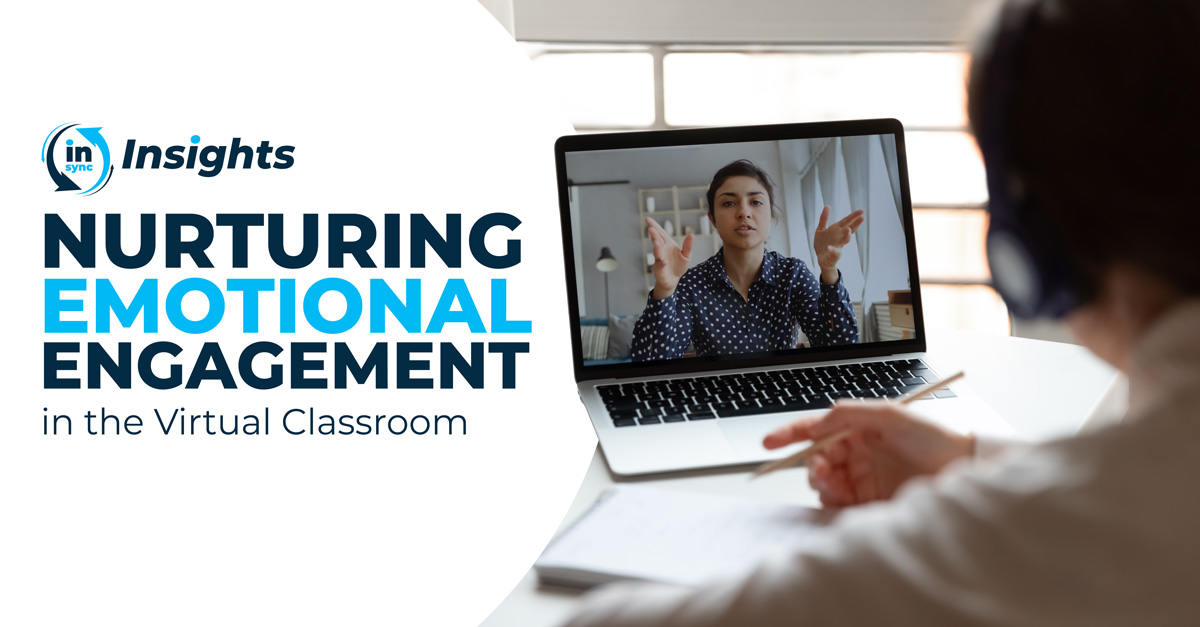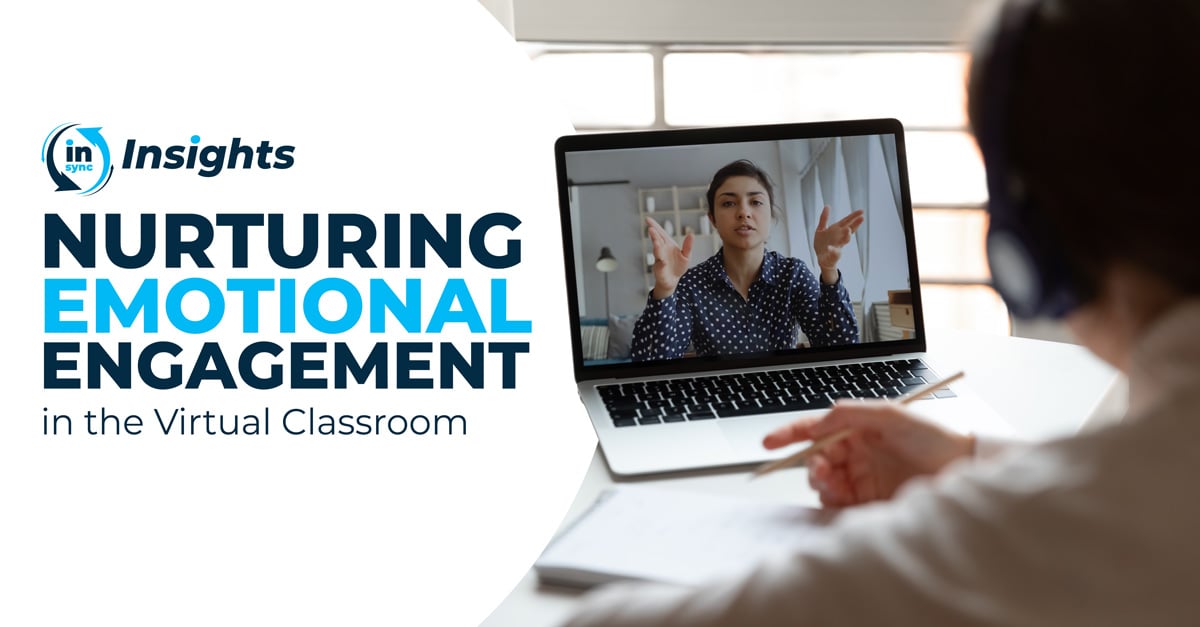Stimulating Intellectual Engagement in the Virtual Classroom
People often wonder if virtual online learning can be as effective as in-person training. Is it a mere compromise, a second-best option? I firmly...
4 min read
 Jennifer Hofmann
:
Sep 11, 2023 9:00:00 AM
Jennifer Hofmann
:
Sep 11, 2023 9:00:00 AM

People often perceive corporate training as a mandatory, impersonal process: they fulfill the requirements and proceed to the next task. This reflects a traditional "push" learning culture that centers on content rather than individual experiences. However, this approach overlooks an essential aspect of effective learning — the emotional component.

Engaging learners emotionally is crucial for fostering a productive hybrid learning environment. This engagement goes beyond merely understanding new concepts; it taps into employees' intrinsic motivation to excel in their roles. Employees yearn to perform well, acquire necessary skills, meet their objectives, and successfully juggle professional responsibilities alongside continuous learning. Recognizing these emotions and aspirations can significantly enhance the learning experience.
In a hybrid learning environment, where face-to-face interactions blend with digital learning, engagement becomes even more critical. High emotional engagement contributes to increased retention rates, improved performance, and a more enjoyable learning experience. It helps learners engage more deeply with the content, encouraging them to take responsibility for their own personal and professional development.
As facilitators, we have a responsibility to acknowledge these emotions and address them in our delivery approach. By doing so, we can transform virtual training from a compulsory task into an enriching, personalized learning journey. In the evolving landscape of corporate training, the focus is shifting from content-centric to learner-centric models. Consequently, nurturing emotional engagement in the hybrid learning environment has become not just beneficial, but critical.
In a hybrid learning environment, where we mix traditional face-to-face interactions with online learning experiences, the need to foster learner engagement becomes increasingly significant. In particular, emotional engagement becomes a cornerstone of successful learning outcomes.
Emotional engagement is a powerful tool that can lead to higher retention rates, improved performance, and ultimately, a more fulfilling learning experience. It empowers learners to establish a deeper connection with the content, cultivating a sense of ownership and commitment towards their personal and professional development.
As facilitators navigating the virtual learning landscape, we bear the responsibility of acknowledging and addressing the emotional aspects of learning in our delivery approach. By doing so, we can transform the often-perceived mandatory virtual training into an enriching, personalized journey of learning. The shift in corporate training from content-centric models to learner-centric ones underscores the growing importance of emotional engagement. Nurturing this element in a hybrid learning environment is no longer merely advantageous; it's an essential component of effective learning strategies.
How learners perceive and feel about the learning experience largely influences its quality. As facilitators, we should strive to create a positive learning environment that not only educates but also fosters a sense of community among learners.
Charles Dye’s research reinforces this perspective, identifying emotional engagement as one of the three critical components of learner engagement, alongside environmental and intellectual factors. This underscores the pivotal role emotional engagement plays in shaping a successful and impactful hybrid learning experience. He clarifies:
"Experienced facilitators focus on activities that might exemplify this aspect of learner engagement, including positive collaboration with peers (McDonald & MacKay, 1998; Calvani, et al., 2010), articulation of shared experience and social modeling (Bandura, 1986), scaffolded development/demonstration of skill/expertise with a facilitator (Vygotsky, 1986), and the sense of self-worth that comes from participation in a learning experience (Cooper, 2010)."
Virtual classroom facilitators can nurture emotional engagement by:
The emotional element of learning is not to be underestimated in the virtual classroom. As facilitators, our role extends beyond simply imparting knowledge; we must also foster an environment that engages learners emotionally. This involves recognizing and addressing the emotional aspects of learning, valuing all contributions, and creating a safe and enjoyable space for learners.
By nurturing emotional engagement in our virtual and hybrid learning models, we can transform the often-perceived mundane corporate training into a rich, personalized learning journey. As we navigate the evolving landscape of corporate training, remember, the shift from content-focused to learner-focused models underscores the growing importance of emotional engagement. Therefore, nurturing this vital component in a hybrid learning setup is not just beneficial — it's essential for increasing learner engagement and getting successful and effective learning outcomes.
What's Next for Virtual Trainers?
Earn your Virtual Facilitation Certification today! Register for InSync's Virtual Classroom Facilitation Mastery certificate program and become an expert in fostering engagement and creating dynamic virtual learning experiences. Take the next step in shaping impactful virtual classrooms.
InSync's InQuire Engagement Framework™, developed by InSync’s Dr. Charles Dye, is based on an operationalized situated cognition model and neuroscience, and optimizes learner trajectory by considering the learner, the learning environment, and the learner-environment interaction through measurable and well-defined measures of effect. Access the original research here: https://opencommons.uconn.edu/dissertations/2403/

People often wonder if virtual online learning can be as effective as in-person training. Is it a mere compromise, a second-best option? I firmly...